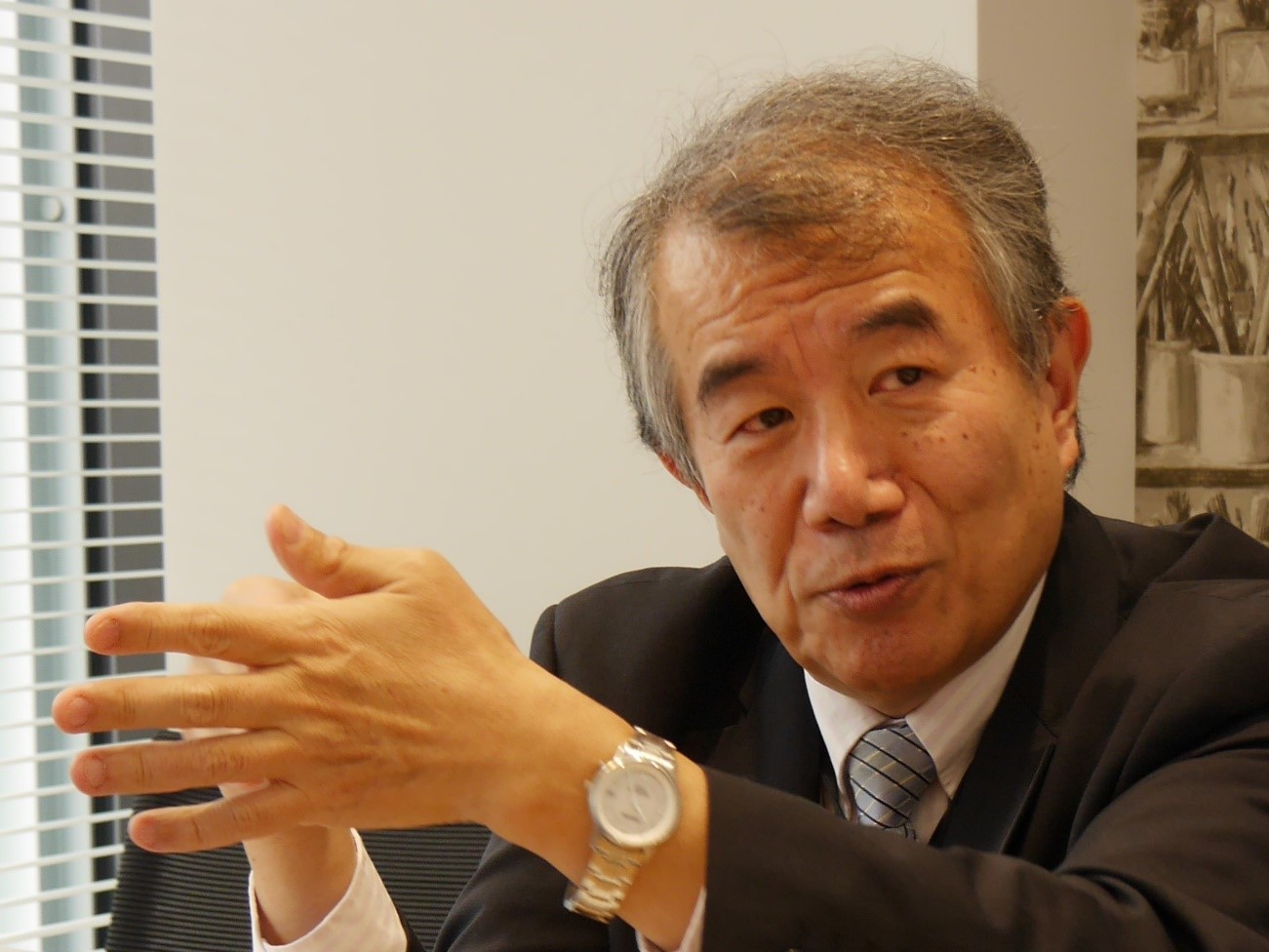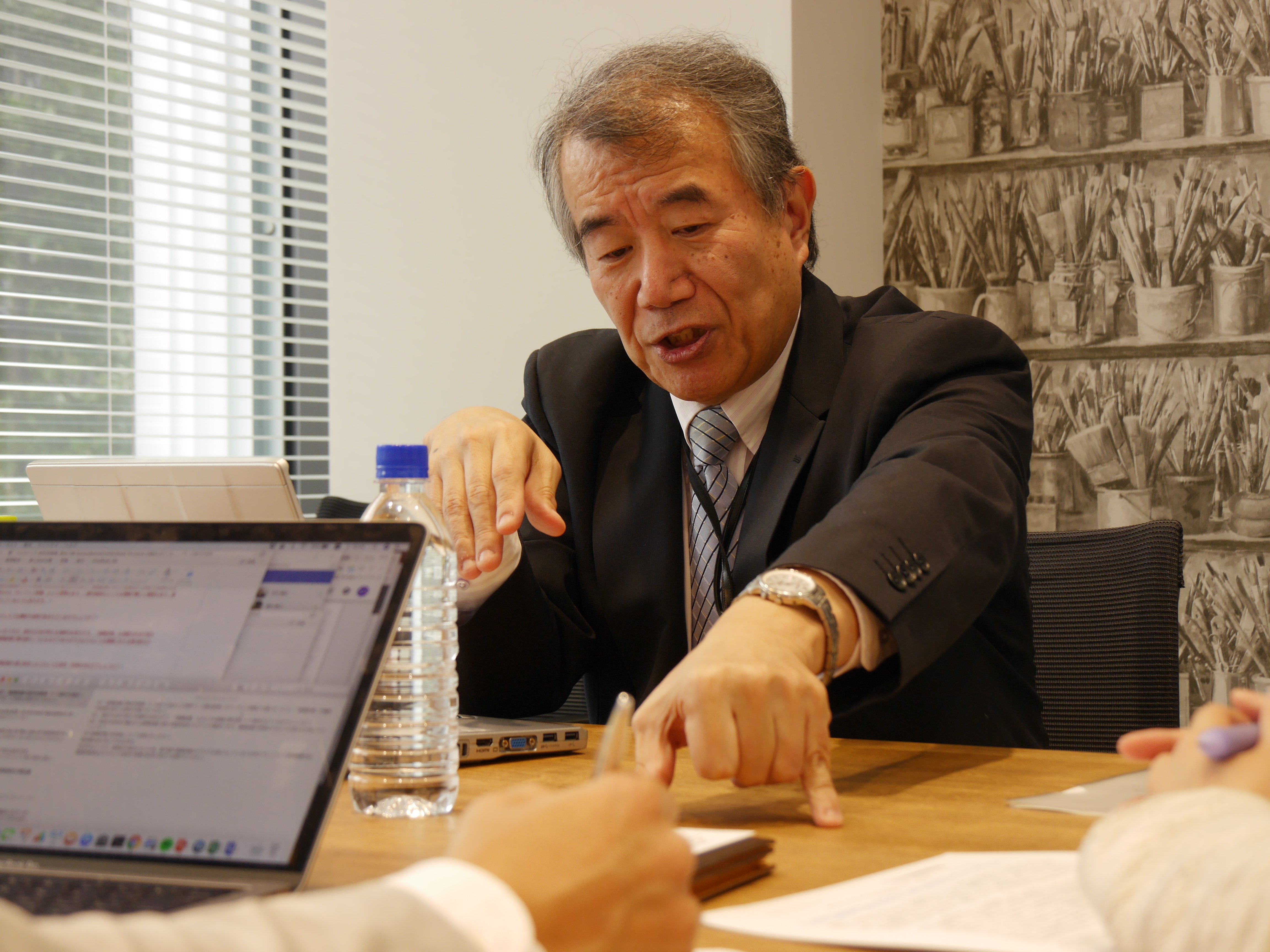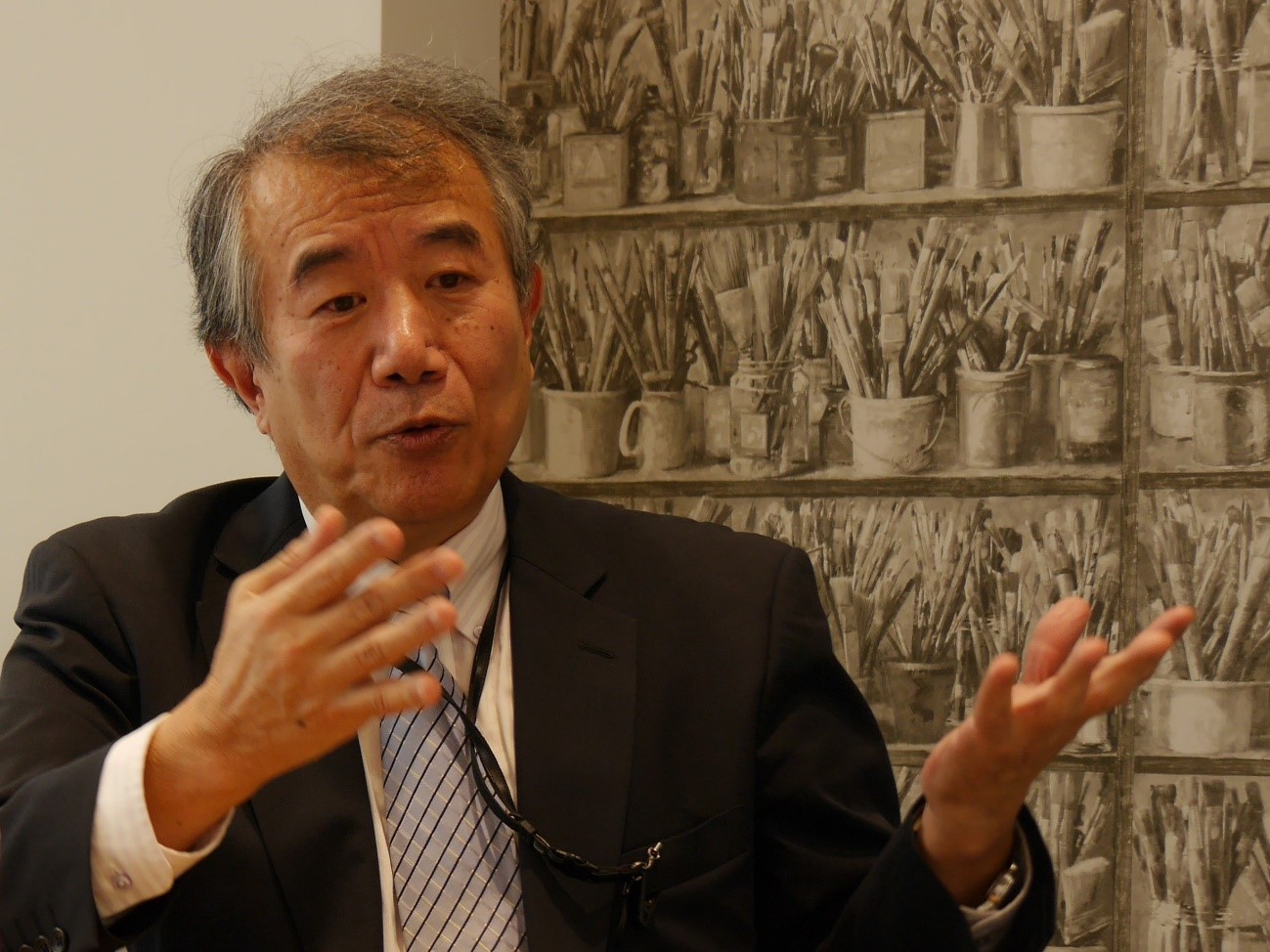© Health and Global Policy Institute
Telemedicine in Japan – A Historical Perspective
Daisuke Sato
Thank you for your time today. Although the history of telemedicine in Japan is long, it is only in the last few years that it has been receiving increased attention from the Government and the business community.
You serve as a director of the Japanese Telemedicine and Telecare Association (JTTA) and you previously worked at the Japan Telemedicine Society (JTS). I hope to hear from you today about the historical background of telemedicine, the current situation of this field, and its future.
I want to begin by asking you about the definition of telemedicine and its historical background - When did people first start talking about “telemedicine”? Recently, there has been a lot of discussion about “online consultations.” Unlike in English-speaking countries where these two terms mean almost the same thing, I think that people in Japan often talk about these terms as representing two separate concepts, but I think that can cause some confusion since the two concepts seem so similar.

Takashi Hasegawa
Regarding “online consultations,” I see that term as referring to “video consultations” and differing from “telemedicine”. For example, we might send data from a blood pressure monitor or pacemaker to a health facility. That would happen via the internet, so it’s “online,” but it’s really something that is still being done as an extension of a face-to-face consultation.
The history of telemedicine started with teleradiology (remote radiology diagnoses), which started in the early 1990's, clearing the path for telemedicine in the field of radiation and pathology. However, at that time the Integrated Services Digital Network (ISDN) had just started to spread (64kbps was considered a high speed), while now a maximum transmission rate of 2000mbps is available with optical fibre telecommunications.
In the past, it took a long time to send just one image, and teleradiology data was sent during the night, when rates were cheaper, to save on transmission costs. With such a constraint on the amount of transmittable information, people thought that affordable video consultations would never happen. The earliest video consultation occurred on September 30, 1995. That consultation probably led the way to the present system.
Research on telemedicine was primarily done by physician researchers in the past. This research was begun out of the hope that tools could be developed for internal diagnostics for remote diagnoses and home consultations. The improvement of diagnostic functions and precision was thought to initially be the key to telemedicine. Researchers also put an emphasis on the physician’s own senses when making use of telemedicine technology. Studies focused on internal diagnostics using the physician's senses, such as the sounds they heard through stethoscopes, rather than just relying on blood markers or images. Telemedicine research today still often emphasizes this point.
The researchers initially involved with telemedicine were around 40 years of age, which is about the same age as the current generation of active telemedicine researchers. Around that time, CT images were rough, and there were no blood markers or BNP (Brain Natriuretic Peptide) marker from the cerebral sodium diuretic peptide (which is an indicator of cardiac insufficiencies, including ischemic heart disease and cardiomyopathy). Today, heart functions can be tested with a blood test, such as a BNP test. Diagnoses can be made just seeing CT images, blood and BNP markers. The development of these diagnostic technologies has been a significant factor contributing to the establishment of online consultations. I’m not trying to say anything negative here about online consultations, I’m just trying to explain how online consultations differ from telemedicine based on that historical background.
Another reason to distinguish the terms “online consultation” and “telemedicine” is related to the culture of doctors – the requirements of telemedicine when it was first developed were quite different from those of the online consultations people talk about today. In the past, if you wanted to get a large government grant to research telemedicine, since it involved fairly advanced technology, you needed to know about engineering and medicine. The assumption for telemedicine was thus based on medical treatment at university hospitals. On the other hand, online consultations are usually done as a supplement to treatment at clinics. This is why we sometimes hear criticism related to online consultations to the effect that “Doctors at clinics cannot provide advanced treatment like university hospitals.” In short, the main distinction between “telemedicine” and “online consultation” is the historical and cultural context in which these fields developed.
In addition to all of that, many telemedicine researchers initially hoped that telemedicine could provide medical services to remote places, via another term, “remote consultations.” It might be better to differentiate these terms – “remote consultations,” “telemedicine,” and “online consultations” – when talking about this field in Japan.
Another reason worth mentioning for the use of two different terms in Japan is changes in the healthcare agenda since the start of research into telemedicine. The issues we see now around home-based medical care were not on the radar in 1995 as that system hadn’t even been established yet. In particular, the interpretive notice for the Medical Practitioners’ Act of 2003 didn’t even consider that a medical reimbursement system would be needed for home care at all. That is why, if you look at those notes now, you can see terms describing diseases which we might now find odd, such as “at-home atopy” instead of just “atopy.”
Around 2008 onwards, home medical care gradually became more popular, leading to the system that we have now. A project on telemedicine and video consultations has also been started with funding provided by the Ministry of Internal Affairs and Communications (MIC), as an ICT solution to cover areas with low population density. Through that project, telemedicine by doctors, nurses and patients, what the project calls “D to N to P” (Doctor to Nurse to Patient) programs were developed in the cities of Niimi City and Asami Town in Yamagata Prefecture.
Daisuke Sato
Turning to more recent issues, do you think it’s possible for telemedicine to be one solution to the problems of the aging society in Japan? What kind of problems do you think telemedicine could help us with?
Takashi Hasegawa
First of all, I think online consultations are effective for certain clinical services, such as medicine prescribing following a discussion with a doctor. There have been some positive results reported in areas such as Androgenetic Alopecia (AGA) and traditional Chinese medicine. This can be a difficult topic to study. Unfortunately, some doctors in university hospitals seem to feel that if we can prescribe medicine via online consultations, it will decrease the importance of their own jobs.
Another issue telemedicine can help with is to stem the tide of patients discontinuing treatment because their subjective symptoms have abated. If we only talk about telemedicine in terms of what it can do for people who are too busy to see a doctor, it is unclear what medical issues it should be used for.

© Health and Global Policy Institute
Third, telemedicine can help to prevent the worsening of chronic diseases. This can also be a difficult research topic, because some doctors feel that they shouldn’t need to use telemedicine for health guidance consultations, as they feel that is a job for public health nurses. Preventative medicine is essential to preventing the onset of severe illnesses. However, the fact is that there are cultural issues that cause some people to think that “minor cases” related to preventative medicine should be cared for by community-based health workers and so on, not the doctors who would be using telemedicine to see patients.
Online consultations are already being used to address some problems, such as by providing daily care for people living with dementia or in the field of mental health. In pediatrics, some cities and wards have started to use telemedicine for purposes of health and welfare service with a view to improving their triage systems so as to prioritise severe cases. This is all being managed by their health and welfare programs. It is particularly notable in the areas of at-home care. Whether we are talking about online consultations or telemedicine, these things are being used at every step of a patient’s treatment plan or clinical pathway. For example, the “home-visit medical care” plan and medical treatments involving an at-home medical care fee call for some nursing visits to be replaced by online consultations or telemedicine appointments with doctors. Such use of telemedicine and online consultations will expand from now on especially in the areas of chronic disease management and home-based treatment.
A lot of what is being done in online consultations is still at an early stage, and will need further work to meet the needs of each specific area. Home care is one area that could be addressed with telemedicine, but there are other potential areas where the technology can be utilized.
Telemedicine has a lot to offer for healthcare facilities with 200 beds or more. There are two reasons why a facility with 200 beds or more would want to use telemedicine – first, it can help to support primary healthcare efforts, and second, it can help hospitals serving people in remote areas. For example, many diabetes patients receive home visits from doctors 11 times per year, and only need to visit specialized hospitals themselves once annually. Those home visits can be done via telemedicine. The resources at large hospitals with over 200 beds should not be allocated to treat minor cases such as cold, headache or hypertensions, and rather to treat severe cases. Telemedicine can be utilized to support home-based care for those minor cases. In such cases, outpatient fees should be calculated per treatment program, rather than charging a full outpatient visit fee. In other words, online consultations and telemedicine are just another option for treatment protocols.
Treatment methods for patients on specific clinical pathways can be changed depending on the patient’s conditions or the functions of the hospital. Even with patients that can go to hospitals themselves, it can help the hospital if those patients receive their consultation over a video call or while hooked up to a biomonitoring device. That is also telemedicine.
Looking forward, a major discussion for this field will be how to think about reimbursements for online consultations. This is not a simple matter. If we only think about telemedicine in terms of what it can do for busy people, it may be hard for people to see what specific disease areas we should use telemedicine for. We would also risk providing unintentional support to companies with poor labor conditions. I could imagine that some companies might want their employees to only use telemedicine so that they can give them even less time off. In any case, whether we are talking about online or offline consultations, there is still a long way to go on this issue, and we can’t rely on only cherry-picked data to solve the issues we face.
Daisuke Sato
I think that the evaluation of telemedicine or treatment protocols is very important when thinking about integrated community care or medical care delivery systems. I think the issue of how to best evaluate evidence is a difficult one. What is your opinion on this?

© Health and Global Policy Institute
Takashi Hasegawa
There are places like Iwate Prefecture for example that are great to study if you are interested in telemedicine policy. I had opportunities to visit many places there. That said, there is still very little evidence available on telemedicine. And if we are thinking in terms of telemedicine for Community Medical Programs, there is often just not enough data in communities related to demographic characteristics, epidemiology, existing health facilities, health staff resources, and information on the extent health staff resources can be increased through telemedicine. If this evidence is lacking, it is hard to determine the need for telemedicine.
In terms of evidence, it would be nice if medical fees could be determined using evidence on clinical effectiveness, but the reality is that it will be challenging to determine medical fees even in cases where we can show that telemedicine is effective. Suppose, for example, that an insurer is comparing two possible services for coverage by their plans – one is online consultations, which have been shown effective for patients wanting at-home care, while the other is a revolutionary anticancer drug which has been shown to reduce or eliminate cancer cells in 40% of patients with lung cancer. If I had to choose which one of them should be covered by the insurance plan, I might say that it would be better to save the patients with lung cancer. However, if the actual number of patients to be saved with the anticancer drug was less than 1% of the population, and a greater proportion could be served by telemedicine, then I might pick telemedicine. In short, we need more evidence to establish whether there is a need to support further development of telemedicine.
In some areas, such as for patients requiring Continuous Positive Airway Pressure (CPAP) machines or cardiac pacemakers, there has been clinical evidence suggesting that following up with patients through telemedicine can have a positive impact, including a reduced frequency of outpatient visits and no increased risk for adverse events even over longer treatment intervals. This can benefit providers, because with evidence for improvements thanks to telemedicine, we might be able to discuss recalculating the fees that are chargeable for these treatments. In any way, there is great need for a research group that could design and plan clinical or social science studies on telemedicine.
Daisuke Sato
Finally, I would like to ask you about the future of telemedicine. What do you envision for the future of telemedicine in 2025, or even in 2035? These are the target years for the establishment of Community Health Care Visions and Japan Vision: Health Care 2035 respectively.
Takashi Hasegawa
Telemedicine may still be developing as a field in 2025. Telemedicine involves a lot of different elements and perspectives, as we have discussed so far. It is deeply influenced by issues in the healthcare delivery system that it is used in. There are inadequate human resources for the use of telemedicine in the integrated community care system. And in that sense, there is also a lack of people doing research in health policy related to these issues. At JTTA, we hope to increase the number of researchers in this field, and get even more people interested in telemedicine and healthcare ICT.

© Health and Global Policy Institute
In terms of the future of telemedicine, I think it is easier to understand if we compare it to a site like Amazon.co.jp, which is managed by Amazon Japan LLC. Technology is not the only reason why Amazon is more successful than other similar companies. Amazon’s success is based on a combination of good product search, order reception, transaction, and logistic process. The recent discussions on telemedicine that people are having don’t look at the big picture. It is as if we evaluated Amazon based only on their order reception processes. We aren’t going to change healthcare by just creating a new kind of “ordering system” – we also must think about “transactions” and “delivery” issues. As long as we are focusing on just one part of telemedicine, we risk falling into the same traps that IT departments were falling into at Japanese companies 20 years ago. Those problems are why we now have positions like Chief Technical Officer (CTO). We need this kind of position for telemedicine – people who are capable of overseeing the entire process. Each person working with telemedicine should be able to grasp the whole healthcare delivery system and to manage the A to Z of the operation using ICT. Regional health and welfare departments also need to have powerful planning officers that can lead their teams.
These issues should be addressed by the field of socio-medicine in Japan as a whole. We have experts now in many academic societies that are specialists in certain areas. What we need are people who can look at the big picture and influence and mobilize society.

